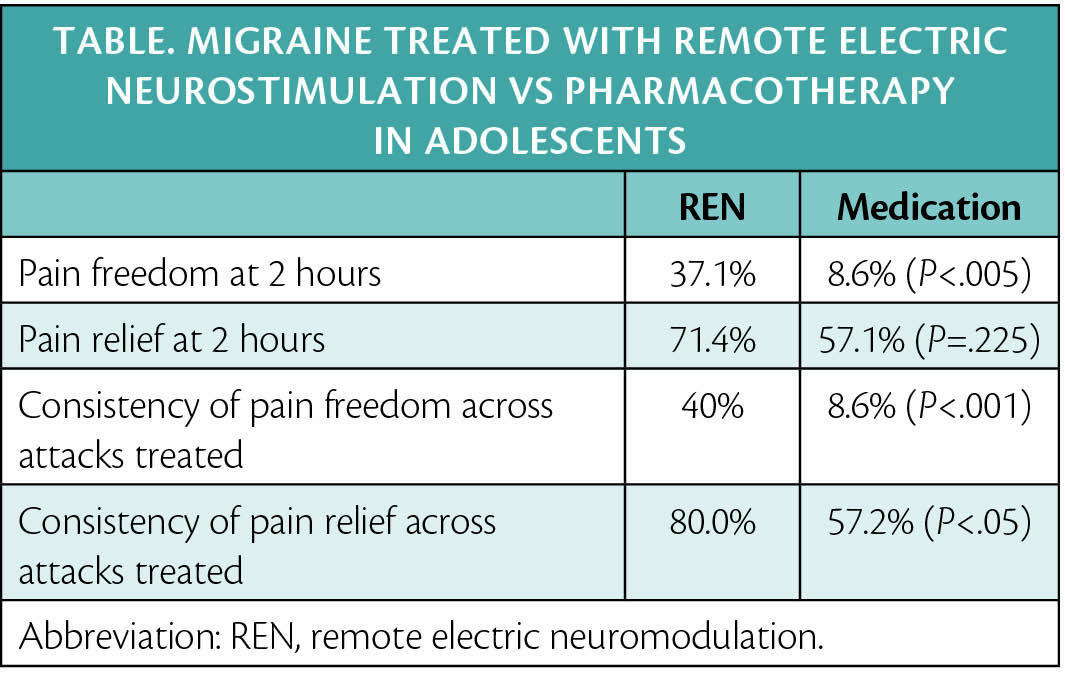Remote Electric Neuromodulation Superior to Pharmacotherapy for Acute Migraine Treatment in Adolescents
Although approximately 9% of adolescents have migraine, there are few approved migraine treatments for this population. Few adolescents with migraine receive treatment from headache specialists and many treat their migraine with over-the-counter pharmacologic agents, often without input from health care professionals, creating a risk of medication-overuse headache. Undertreated migraine also correlates with a higher risk of developing chronic migraine.
Remote electric neuromodulation (REN) (Nerivio; Theranica Bio-Electronics, Netanya, Israel) is approved for acute treatment of migraine with or without aura in people age 12 years and up; it is among the few approved treatments for migraine in those age 12 to 17 years. New research presented at the American Academy of Neurology Annual Meeting 2022 April 2-7 in Seattle, WA shows that REN is superior to both over-the-counter analgesics and oral triptans in this age group (Table).

Scott Szymanski, president, USA Theranica Bio-Electronics commented, "We want family practitioners and pediatricians to be aware that migraine is highly prevalent in adolescence and is associated with poorer performance and absence from school and social activities. There is a double-edged sword for pharmacologic treatment in that both over- and undertreatment with these agents can worsen migraine. Providing teens with more effective and engaging treatments for migraine can have far-reaching positive effects over the course of their lives and we are pleased that Nerivio provides an effective and safe option for adolescents who need effective migraine treatment as much as adults with this condition.
Treatment-emergent adverse events with REN included temporary arm pain in 1 individual, which resolved without intervention and no participants withdrew from the study due to adverse events.
These data are from the open-label multicenter prospective study of REN for acute migraine treatment for 35 participants who reported using medications (over-the-counter analgesics or oral triptans) for treatment prior to the beginning of the study. Using a migraine diary, results of treatment during a 4-week run-in phase with medications were compared to treatment of attacks in the intervention phase.
